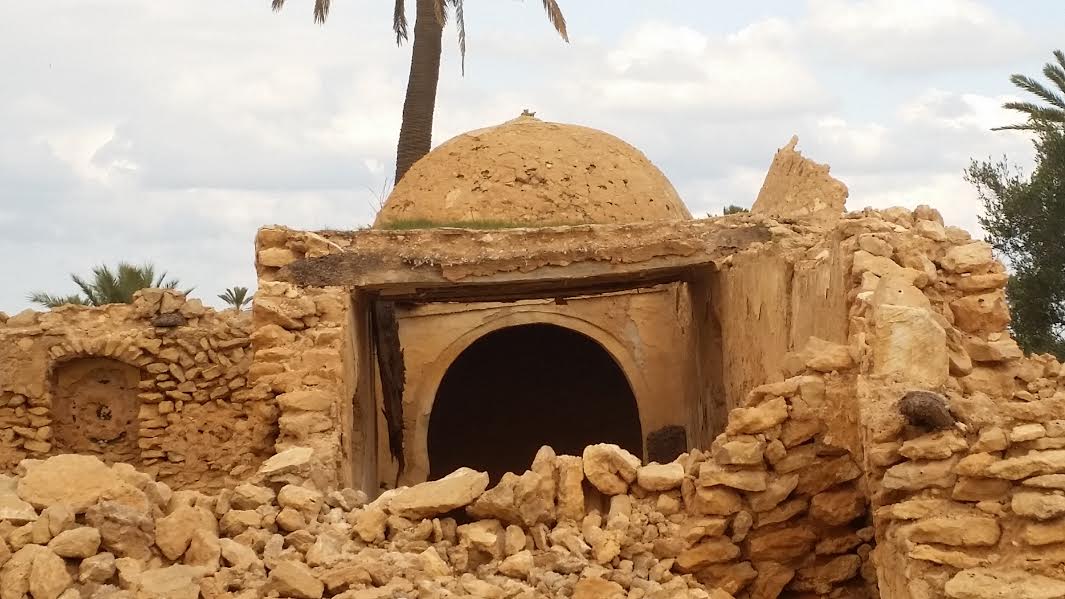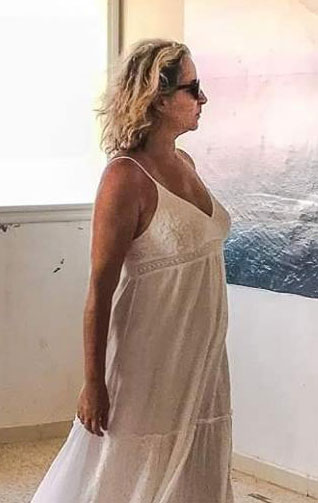

The island of Djerba often evokes the sea, sun, endless tourist areas and lots of sandy beaches. But Djerba is an island of history, culture, traditions, an intimate island that must learn to discover and enjoy. In Summer as in winter going around the island to discover its borjs is a good way to become fully aware of this duality. A concrete-tourism east coast and a more wild and preserved west coast (hopefully for a few more years …)
We invite you to start your tour of the island (lasting approximately 2:30 if you take your time) by the East at sunrise. Most balk lazy to get up at dawn but the scenery of the first rays of sun is really worth it. And then, this morning’s getting up will prevent you from undergoing djerbienne heatwave!
If you go to Houmt Souk, the road to Midoun no great interest apart at the sebkha at the south exit of Houmt souk where you can still observe some birds like flamingos or cranes … it is also the meeting place of lots of kite surfers.
Past Midoun , the landscape changes. You cross on of the symbols of Djerba, the lighthouse Targuemès, all in red and white, built in the late 19th century on the orders of The Bey on a small prominence. Then you come across in Aghir 1 borj unfortunately transformed under the French protectorate in customs building and currently in vacation home for young people. The Borj Ksar Massoud in the south experienced a similar fate since it is currently the headquarters of the National Board of Fisheries.

Past Aghir , buildings and constructions are less dense leading a coastal road being repaired. This is an opportunity to discover the other side of the island, a palm vegetation sparse and a south sebkha extending to kastil borj. Built in the thirteenth century by the Sicilian admiral Roger de Loria and restored in the fifteenth and the sixteenth centuries, the fort square shape approximately 10m in height is located at the end of the peninsula Bine el Ouidiane. We can not get there by car. You can reach it on foot in summer through sebkha if you’re good walkers (but watch this route is deemed especially dangerous because of the tide) or you can go by quad arranging with a rental agency. This area of the island is also a spot for junkies kite surfing. You will also come across a club of this sport and various small restaurants if you want to stop. Then it is the city of El Kantara arrival point of the Roman road, a land of 7 km between the island of Djerba to the mainland from the Punic era and the Romans transformed into true communication channel. A borj, the El Wasat, stood before the middle of the Roman road to monitor the access the south of the island. The roadway was widened and lined pipes supplying water to the island in 1973.
Always along the coast, on the road from Guellala, be sure to stop at the archaeological site Meninx. There is not much to see because the majority of the site was submerged but you can still see some remains such as white marble column bases, granite columns, capitals and numerous statues but the framing of site is really beautiful and you will learn that Meninx was then Phoenician trading post. The city had its heyday in the Roman period, when it became the capital of the island. A first exploration of the site revealed baths, an amphitheater, a theater, a basilica and probably a forum.

Next stage of your journey, Guellala, known for its pottery made of raw land (clay) and its museum of arts and popular traditions. Although the Heritage Museum Guellala (http://www.mille-et-une-tunisie.com/index.php?option=com_content&view=article&id=721:musee-du-patrimoine-de-guellala) is much less attractive from a museum perspective the museum Houmt souk, it is still worth a visit just for its collection of bridal wear from all regions of Tunisia. Guellala also a stage for a lunch break. The museum route precisely, “The Golden Fish” (Le Poisson d’Or) offers a full menu to 22dt centered around seafood is a real treat.
If you prefer to take the road towards Ajmi, known for its ferry that connects the island to the mainland. Ajmi also hosts a Borj, Borj Marsa Ajmi. Located in the south western tip of the island, on the road linking the port to the city, the building had the function of protecting the main entrance to the island by the channel Ajmi.
Our journey continues now on the west coast of the island towards Sidi Jmour and Bordj Djellil far north. Thus we began a wonderful discovery between sea and wild side. Fishing boats, flying seabird houses clinging to the shores punctuate this progress. On this coast, the funds are shallow. At low tide, the sea retreating (from 100 to 200m) leaves large rich saltwater pools of a biodiversity. At sunset, the landscape is even more dense.
In Sidi Jmour, a stop to watch the shore and the marabout is essential.

Then the road continues to Borj Djellij on 1st Island lighthouse built in the sixteenth century in the footsteps of an old Spanish fort. The lighting system is then made based on olive oil, olives grown on the island. The small trail leads to a sea area where fishermen, fishing nets and eateries for octopus fishing intermingle in a vision quite charming. It is also an opportunity to discover a few meters from the edge of the traditional fishing technique beach rather special and used in Djerba (as in Kerkennah matter): the zriba or Charfia (fixed fishery). These hedges or walls palms pressed into the mud shoals to stop the fish and direct them to the traps.
Back on the main road, just to get behind International Airport Houmt- souk to return to this city from the north. Remember here to visit the Borj Ghazi Mustapha and the fabulous Djerba Heritage Museum located near the mosque foreigners.
Your trip around the island of the Lotus Eaters is so complete!
Arabian Tunisia and djerba.net.free.fr/bordj.htm



 َAbonnez-vous
َAbonnez-vous

